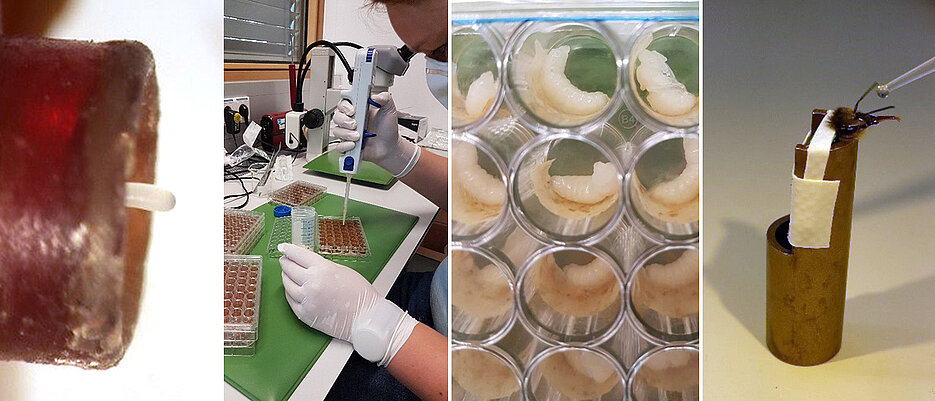Sweet insights into the bees' sense of taste
11/12/2020Scientists at the University of Würzburg have switched off a sugar receptor gene of the honey bee using CRISPR/Cas9 gene editing. Their study provides new insights into the taste perception of these insects.

The bees' ability to taste sweet seems quite natural to us – after all these social insects collect nectar from flowers and produce honey from it. What is astonishing, however, is that bees need only three receptors to perceive the many different sugars they encounter while foraging, such as fructose, sucrose, glucose, maltose, melicitose or trehalose. By studying cell systems, the research team, led by Dietmar Geiger, Professor of Plant Physiology at the Department of Botany I, was able to confirm that one of these receptors (AmGr3) reacts to fructose alone, while the other two (AmGr1 and AmGr2) detect all other sugars.
These sugar receptors are also the focus of a research project conducted by Ricarda Scheiner. The biology professor leads the research team at the Department of Behavioural Physiology and Sociobiology at the Biocenter of the University of Würzburg (JMU). For many years, she has been researching the molecular bases of behaviour control in honey bees.
Publication in "Chemical Senses"
Together with her team, Scheiner has now succeeded in switching off the gene of the specific fructose receptor AmGr3 in bee eggs using CRISPR/Cas9 gene editing. Subsequently, the scientists reared the animals carrying this mutation and examined their taste perception. The result was recently published in the journal Chemical Senses .
"Honey bees without the AmGr3 receptor tasted less fructose than the control animals. Their taste for sucrose remained unaffected," says Laura Degirmenci, the study's lead author, describing the central result of the experiments. The scientist was thus able to confirm earlier results from experiments on cell systems in animal models according to which AmGr3 is a fructose receptor.
Moreover, the work shows "that the CRISPR/Cas9 technique is an effective tool to study receptors and behaviour in this organism," said Degirmenci. Ricarda Scheiner's research team has recently established the use of gene editing in honey bee research at the University of Würzburg. In spring 2020, she received the Momentum Research Award of the Volkswagen Foundation endowed with half a million euros.
Funding
The study was funded by the German Research Foundation DFG (funding number: SCHE1573/8-1) and the Volkswagen Foundation.
Publication
Değirmenci, L., Geiger, D., Ferreira, F. R., Keller, A., Krischke, B., Beye, M., Steffan-Dewenter, I. & Scheiner, R. " CRISPR/Cas 9 mediated mutations as a new tool for studying taste in honeybees" CHEMICAL SENSES. Vol. 45, Issue 8, October 2020, Pages 655–666 https://doi.org/10.1093/chemse/bjaa063
Contact
Prof. Dr. Ricarda Scheiner, Department of Behavioural Physiology and Social Biology (Zoology II),
T +49 931 31-84745; ricarda.scheiner@uni-wuerzburg.de
Laura Degirmenci, Department of Behavioural Physiology and Social Biology (Zoology II),
T +49 931 31 83223; laura.degirmenci@uni-wuerzburg.de.






